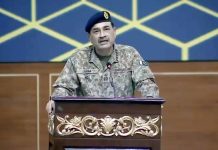| Ukraine, Russia-backed separatists break truce as tensions soar | Top-level talks aim to avert threat of Ukraine war | UN diplomat says there is no sign of major operations
DM MONITORING
Mariupol, Ukraine: Ceasefire violations by Ukraine and Russian-backed separatists continue despite both sides agreeing to uphold a permanent truce, yet there is no sign of a “serious military build-up” along the 430km line of contact, a top United Nations diplomat told.
The amassing of thousands of Russian troops and military hardware at the Ukraine border and in annexed Crimea in recent months has stoked fears of an imminent Russian invasion.
However, along the front line that separates Ukraine and two breakaway territories controlled by Russian-backed forces, there is no indication of preparations for massive military operations, said Mikko Kinnunen, the representative in Ukraine for the Organization for Security and Co-operation in Europe (OSCE).
“There is no concentration of troops or capabilities along the contact line that would suggest that either party plans to start a bigger operation,” he said.
War was sparked in 2014 when protests in Ukraine ousted a pro-Russian president and Moscow annexed Crimea, also backing separatist insurgents who now control the self-proclaimed Donetsk People’s Republic (DPR) and Luhansk People’s Republic (LPR).
Since then, there have been more than 20 agreements to reach a lasting ceasefire, the most recent in July 2020.
According to the OSCE, the world’s largest security body, there have been more than 100,000 ceasefire violations since 2015.
Attempts at attacks increased dramatically when tensions first rose between Ukraine and its Western allies and Russia in November and December last year, but then decreased by 70 percent up until late January, Kinnunen said.
However, they have begun to rise again.
Last Thursday, the OSCE, which is monitoring the security situation on the ground, reported 403 violations – the heaviest fighting so far this year. The earlier reduction in violence is an indication that “if there is political will, then it is possible to have a proper lasting ceasefire”, Kinnunen said.
According to the Office of the United Nations High Commissioner for Human Rights, 25 civilians were killed and 85 injured as a result of the conflict last year – a 26 percent decrease compared with 2020 and the lowest annual rate since the war began.
In the last two months of last year, as tensions rose after the Russian troop buildup was first reported in early November, one woman was killed and nine people were injured.
In total, more than 14,000 people have died in the fighting, including 3,000 civilians.
Last week in Paris, following hours-long talks, negotiators from Ukraine and Russia – which represents the rebels in international negotiations – agreed that a permanent ceasefire in eastern Ukraine must be observed “unconditionally”.
However, both sides have accused each other of provocations at the border.
On Sunday, separatist officials in LPR said they had intelligence that Ukraine has deployed special operations forces, Russia’s state TASS news agency reported.
Ukraine’s military intelligence service said last week that Russia was sending mercenaries, tanks, mobile artillery units and 7,000 tonnes of fuel to the area.
The United States has also accused Moscow of sending saboteurs into eastern Ukraine, potentially to conduct a “false flag operation” that could give Russian President Vladimir Putin a pretext for military action.
The Kremlin denies that it has plans to attack Ukraine and that it provides military support to the separatists.
However, last week, Andrey Turchak, a top official of the pro-Kremlin ruling party, said weapons should be sent to help the two territories “deter a military aggression clearly being prepared by Kyiv”.




